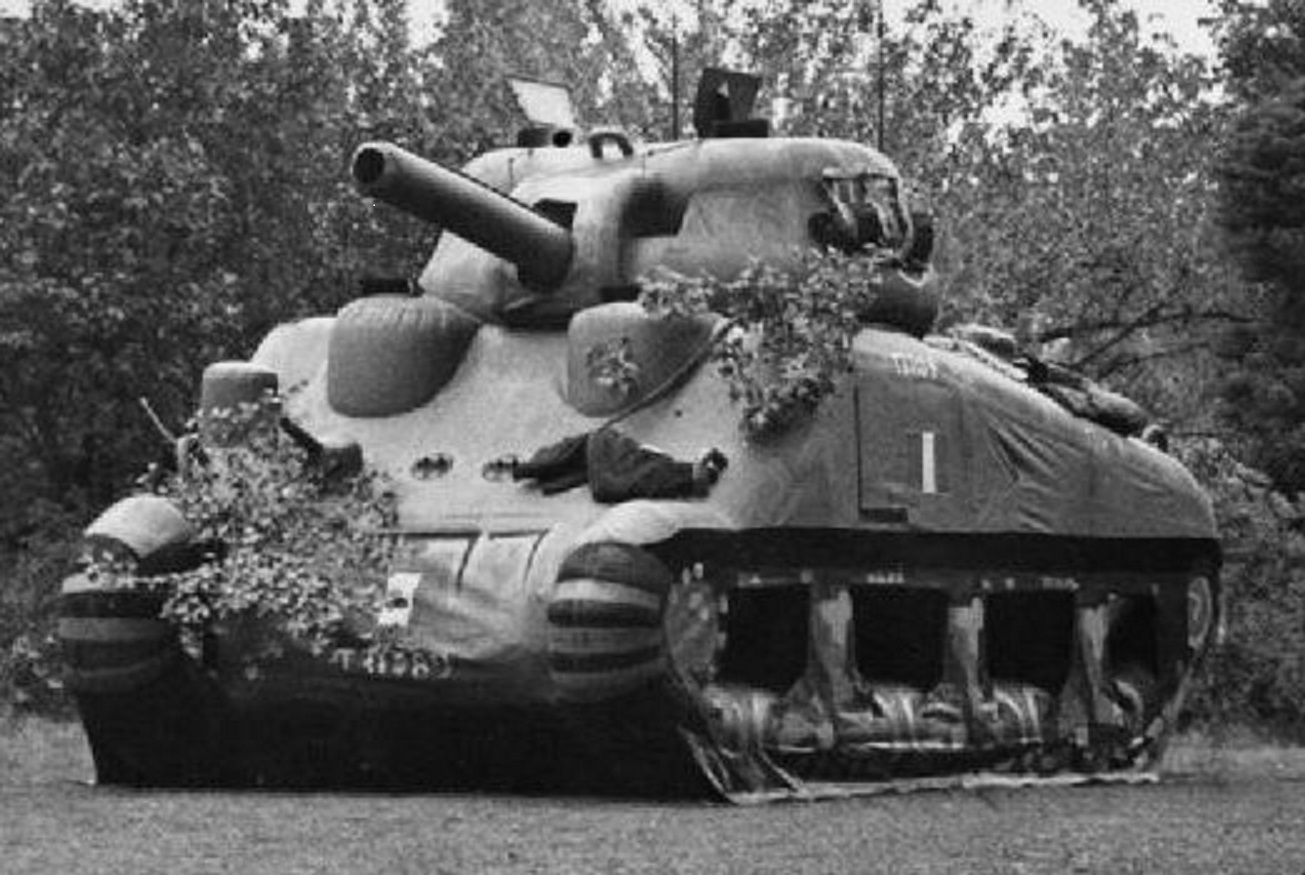An inflatable dummy tank of the Ghost Army, modeled after the M4 Sherman. Photo: US Army.
All warfare is based on deception.” — Sun Tzu
The Ghost Army was a top-secret unit of the US Army during World War II that specialized in tactical deception. The unit was officially known as the 23rd Headquarters Special Troops, and it was composed of about 1,100 men who had backgrounds in art, design, sound engineering, and other creative fields. Their mission was to create realistic illusions of Allied forces to confuse and misdirect the German army. They used inflatable rubber models of tanks, trucks, artillery, and aircraft, which they painted with authentic details and camouflage. They also used sound trucks that played pre-recorded noises of military activity. They transmitted fake radio messages and codes to make the Germans think they were intercepting communications from real units.
The Ghost Army created their inflatable tanks and vehicles by using gasoline-fueled air compressors that could fill up rubber models in minutes. The models were made of rubberized fabric that was coated with olive drab paint. They were designed to look like real military equipment from a distance, but they were hollow and lightweight. Some parts, such as tank turrets or cannon barrels, were actually large balloons that could be deflated and folded for easy transport. Other parts, such as tank bodies or truck chassis, were made of long rubber tubes that were connected like a tent frame. The models were then painted with details such as insignia, serial numbers, camouflage patterns, and even fake mud or bullet holes. The artists of the Ghost Army used their artistic skills to make the models as realistic as possible, sometimes using photographs or sketches of real equipment as references. The models could be set up or taken down quickly, depending on the situation. The Ghost Army also used real vehicles and equipment to mix with their fake ones, creating an illusion of a larger force.
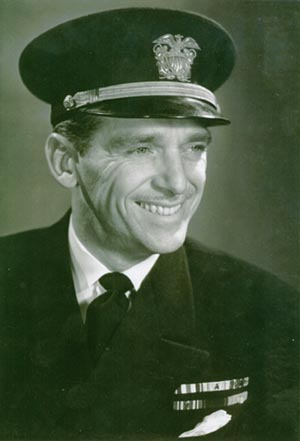
The idea of the Ghost Army is not fully clear, but some sources suggest that it came from Douglas Fairbanks Jr., an actor and US Navy officer who organized a US Navy special warfare unit called the “Beach Jumpers” which specialized is psychological warfare and deception operations. He was impressed by the British use of deception at the Battle of El-Alamein in North Africa, where they used fake tanks, dummy soldiers, and false radio traffic to mislead the Germans.
Reportedly, Fairbanks proposed to create a similar unit for the US Army that would use visual, sonic, and radio deception to fool the enemy in Europe. He lobbied his contacts in Washington DC and London to get approval for his plan. He also recruited some of his friends from Hollywood and Broadway to join his unit. His request was granted, and the Ghost Army was formed in January 1944 under the command of Colonel Harry L. Reeder.
Among the notable members of the Ghost Army were Bill Blass, a fashion designer who became famous for his elegant and sophisticated designs for women; Ellsworth Kelly, a painter and sculptor who became one of the leading figures of abstract art in the 20th century; Art Kane, a photographer who became renowned for his portraits of celebrities, musicians, and social movements; and Arthur Singer, a wildlife artist who became famous for his realistic and detailed paintings of birds and animals. These men served in different roles in the Ghost Army, such as camouflage specialists, radio operators, naval officers, and camouflage artists. They used their brains and talents to mislead, deceive, and befuddle the German Army. They also used their wartime experience to influence their later careers and artworks.
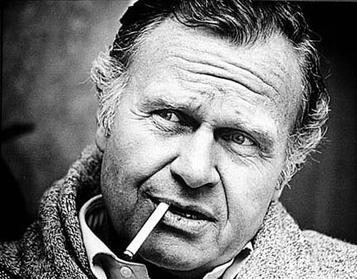
The Ghost Army staged more than 20 deception operations in France, Belgium, Luxembourg, and Germany between June 1944 and March 1945. They often operated close to the front lines, sometimes within sight or hearing of the enemy. Their actions helped to divert enemy attention and resources away from the actual Allied operations, such as the D-Day invasion, the Battle of the Bulge, and the crossing of the Rhine.
The Ghost Army played an important role in supporting the D-Day invasion on June 6, 1944. Before D-Day, some members of the Ghost Army participated in Operation Fortitude, a deception plan that aimed to convince the Germans that the main Allied landing would be at Pas de Calais instead of Normandy. The Ghost Army used fake radio traffic and double agents to create a false impression of a large force gathering in southeastern England opposite Pas de Calais. This deception kept many German troops and defenses away from Normandy on D-Day.
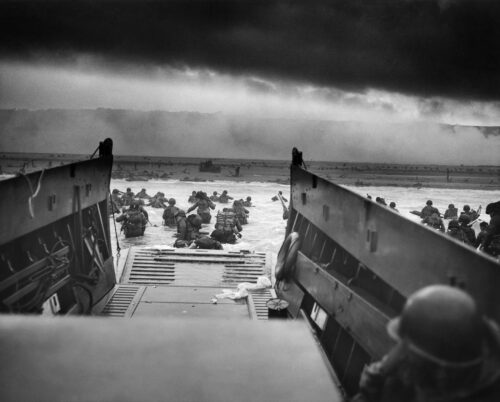
Some of the troops from the Ghost Army went to Normandy two weeks after D-Day and simulated a fake Mulberry harbor at night with lights intended to draw German artillery fire away from the real ones. A Mulberry harbor was a floating artificial harbor that allowed the Allies to unload supplies on the beaches without using a port. The Ghost Army also created fake headquarters and camps near the front lines to mislead German spies and aerial reconnaissance. The Ghost Army helped to protect and reinforce the Allied beachhead in Normandy until it was secured.
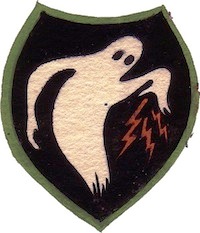
The Ghost Army’s biggest deception was Operation Viersen, which took place in March 1945 along the Rhine River, where the Allies were preparing to launch a massive assault across the river into Germany. The objective of Operation Viersen was to deceive the Germans into thinking that the main crossing point would be at Wesel, north of Cologne, while the actual crossing would be at Rheinberg, south of Wesel. To achieve this, the Ghost Army simulated two fake infantry divisions (the 30th and 79th) in the XIII Corps zone near Wesel, while the real divisions moved secretly to join the XVI Corps near Rheinberg.
The Ghost Army used inflatable tanks and artillery, dummy landing craft and bridges, false radio traffic and codes, sound effects and impersonations to create a convincing impression of a large buildup of troops and equipment near Wesel. They also staged mock attacks and diversions along other parts of the river to distract and confuse the enemy. Operation Viersen was a success: it fooled the German High Command into believing that Wesel was the main target and that Rheinberg was only a diversion. As a result, the Germans kept most of their forces and defenses concentrated around Wesel, leaving Rheinberg relatively undefended. This allowed the real Allied assault at Rheinberg on March 23 to achieve a swift and decisive breakthrough across the Rhine with minimal casualties. Operation Viersen earned the Ghost Army a commendation from General William Simpson, commander of the Ninth US Army.
The Ghost Army’s activities were kept secret for more than 50 years after the war, until they were declassified in 1996. In 2022, the members of the Ghost Army were awarded the Congressional Gold Medal for their unique and highly distinguished service in World War II.
*The views and opinions expressed on this website are solely those of the original authors and contributors. These views and opinions do not necessarily represent those of Spotter Up Magazine, the administrative staff, and/or any/all contributors to this site.
